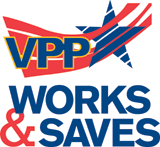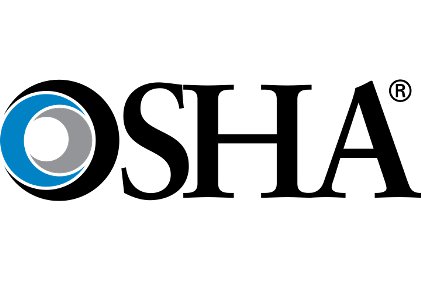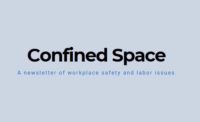 On June 28, Jordan Barab, Deputy Assistant Secretary for Occupational Safety and Health, testified before the House Committee on Education and the Workforce's Subcommittee on Workforce Protections about OSHA's Voluntary Protection Programs.
On June 28, Jordan Barab, Deputy Assistant Secretary for Occupational Safety and Health, testified before the House Committee on Education and the Workforce's Subcommittee on Workforce Protections about OSHA's Voluntary Protection Programs.
Statement of Jordan Barab:
Chairman Walberg, Ranking Member Woolsey, and Members of the Subcommittee:
Thank you for this opportunity to discuss the Occupational Safety and Health Administration's (OSHA) Voluntary Protection Program (VPP). The agency is very proud of VPP and we believe that the program represents a necessary and effective way to recognize and reward companies that make the safety and health of their employees their highest priority.
Over the past three and a half years, Dr. Michaels and I have met with the Voluntary Protection Program Participants' Association (VPPPA) board and members on many occasions and visited VPP plants across the country. We've been extremely impressed with the health and safety programs at those sites. We have witnessed firsthand the participating companies' dedication to workplace safety, as evidenced by the utilization of best practices and implementation of safety and health management systems that are often more rigorous than that required by OSHA standards, as well as an obvious pride in their health and safety achievements. VPP companies are characterized by successful injury and illness prevention programs and labor-management cooperation, which result in excellent injury and illness rates. These employers clearly demonstrate that it is possible to operate a company that is both profitable and serves as a model for businesses and industries in all sectors of the American economy.
Companies that demonstrate such a strong and unwavering commitment to workplace safety and health deserve recognition, and, through VPP, OSHA is able to provide this important acknowledgment of their efforts. To that end, OSHA publicizes the success of VPP participants through stories on the agency's web site, press releases, and recognition in the speeches of OSHA officials.
History
OSHA's Voluntary Protection Program has a long and honorable history. In creating OSHA, Congress wisely gave the agency substantial flexibility to use a mix of enforcement, standard-setting, compliance assistance, and voluntary programs to achieve the goal of protecting our nation's workforce. The VPP, which launched in 1982, is one of the components of this programmatic mix.
VPP recognizes employers and workers, in both private industry and the Federal Government, who have implemented safety and health management systems and maintained injury and illness rates below the national average for their industries. Through VPP, OSHA works cooperatively with management and labor to prevent occupational injuries, illnesses and deaths. VPP participant worksites maintain comprehensive injury and illness prevention programs that share a number of important elements, including: (1) management commitment and worker involvement; (2) worksite analysis; (3) hazard prevention and control; and (4) training. In our experience, employers who qualify for VPP generally view OSHA standards as establishing a minimum level of safety and health performance; they often go beyond OSHA requirements in protecting their workforce, and involve their employees in all aspects of the health and safety process.
How VPP Works
Employers seeking to participate in VPP must submit a written application and undergo a rigorous on-site evaluation by a team of safety and health professionals. In addition, union support is required for applicants represented by a bargaining unit. There is no single correct way to meet the VPP application requirement. VPP Managers are stationed in each of OSHA's ten Regional offices to offer advice and guidance on completing the application process. Successful applicants will demonstrate health and safety management systems that work for their specific work activities and hazards. In completing the application process, OSHA encourages employers to submit existing documentation to the extent possible, rather than create a large quantity of new materials.
Once an application for VPP has been reviewed and accepted by the Region, an on-site evaluation is generally conducted within six months. If there are no items that need improvement, the applicant typically receives a formal approval letter three to eight months after the on-site evaluation. Initial approval is valid 30-42 months for a Star site, 18-24 months for a Merit site, and 12-24 months for a Demonstration site. Resource limitations may impact the approval process, including to the review of applications, scheduling onsite evaluations, finalizing onsite evaluation reports, and approving sites. OSHA has been able to meet the goals established in its Operating Plan and Budget for completing new VPP approvals, but recognizes that the length of time for approving new sites is of concern to applicants, and we are working to address this issue. The agency also is working to address the backlog of reapproval evaluations. Because of the VPP's rapid growth since 2003, reapproval evaluations for a considerable number of VPP participants were due during the last few years. This demand led to a backlog in conducting reapproval visits. OSHA has focused on reducing the reapproval backlog and anticipates eliminating it by the end of 2012.
Generally, an on-site evaluation takes 3 to 5 days and utilizes 2 to 6 staff, including Special Government Employees (SGEs), who are specially-trained private-sector and government employees from existing VPP members and that supplement OSHA's resources to help bring in new participants and reapprove current participants. On-site evaluations at shipyards, refineries, or other sites with activities that fall under the OSHA Process Safety Management standard can take considerably longer – up to 10 work days. On-site visits are conducted as part of both the VPP approval and reapproval processes.
Participation in VPP does not diminish an employer's responsibilities or the rights of employees under the OSH Act. VPP participants are exempt from OSHA programmed inspections while they maintain their VPP status. These worksites still will be inspected, however, when three hospitalizations or a fatality occurs, or when employees file a formal complaint about workplace hazards.
If an onsite evaluation reveals a hazard that endangers the health and safety of employees, the onsite evaluation team must add the hazard to a written list of uncontrolled identified hazards. If the VPP participant cannot correct the identified hazard before the conclusion of the onsite evaluation, then the hazard will be assigned as a 90-day item. If a VPP participant refuses to correct the noted hazard, the worksite in violation is referred to OSHA enforcement for an inspection and appropriate remedial measures, including sanctions, fines, and termination from the program.
OSHA currently approves qualified employer VPP sites for participation in one of three programs. The first, Star, provides recognition for companies that demonstrate exemplary achievement in the prevention and control of occupational safety and health hazards and the development, implementation and continuous improvement of their safety and health management system. Worksites in the Star program have achieved injury/illness rates at or below the national average for their industries. These sites are self-sufficient in their ability to control hazards. Star participants are re-evaluated every 3 to 5 years, but their incident rates are reported to OSHA and reviewed annually.
Merit recognizes companies that have developed and implemented good safety and health management systems, but need to take additional steps to achieve Star quality.
Demonstration recognizes companies that operate effective safety and health management systems that differ from current VPP requirements. Demonstration status provides the opportunity for employers to show the effectiveness of alternative methods of achieving safety and health management excellence. For example, employers with Demonstration status can test the potential of a new approach to hazard reduction within VPP. Demonstration status also recognizes the potential for such purposes as exploring the application of VPP in an industry where it isn't commonly utilized.
As of May 31, 2012, there were 2,374 total active VPP sites (Federal and State) protecting more than 911,000 workers. This figure has more than doubled since 2003. VPP participants can be found across the entire spectrum of American industry – from manufacturing to chemicals, and construction to motor freight transportation, including Federal worksites such as Hanscom Air Force Base in Bedford, Massachusetts.
VPP participants are models for effective employee protection in their respective industries. The most obvious evidence of the program's success is the impressive reduction in occupational injury and illness rates, as well as reduced workers' compensation costs and decreased employee turnover. Participants speak often of the "cultural transformation" that often occurs during the VPP application process.
Data shows that site-based non-construction participants' Total Case Incident Rates (TCIR i.e., the total number of nonfatal recordable injuries and illnesses that occur per 100 full-time employees) of VPP members are 45 percent below the Bureau of Labor Statistics (BLS) rates. The Days Away from Work, Restricted Work Activity, or Job Transfer (DART, i.e., the rate of injuries and illnesses that result in workers having days away from work, restricted work activity, and/or a job transfer) rates are 56 percent below the BLS rates for their respective industries. For site-based construction and mobile workforce participants, TCIR are 60 percent below the BLS rates, and the DART rates are 56 percent below the BLS rates for their respective industries. Fewer injuries and illnesses mean greater profits for employers as workers' compensation premiums and other costs, such as downtime, are reduced. Industries gain from VPP because VPP participants set an example for other companies. For its part, OSHA also gains a corps of ambassadors who are enthusiastic about the message of safety and health management and who are eager to share their success stories with others.
In light of the success of the Federal VPP, OSHA has encouraged State plans to establish parallel programs. I am pleased to report that all State plans have done so. Although State VPPs are similar to the federal program, they may have different participation categories, processes and criteria. In particular, we note that some States include programs that closely correspond to OSHA's Star program.
OSHA is also increasing the use of its valuable Special Government Employee (SGE) Program in VPP evaluations. SGEs are employees of VPP firms that assist OSHA in evaluating the worksites of other potential VPP applicants. Prospective SGEs must be approved by OSHA, funded by their companies, and complete a three-day OSHA training course before these qualified volunteers are sworn is as SGEs. VPP worksites and their companies generously support their employees' SGE participation. As of May 31, 2012, there were 1,277 SGEs. In FY 2011, 63 percent of VPP Evaluation Teams used SGEs. The SGE Program encompasses the spirit of VPP's cooperation among industry, labor, and the federal government. This cooperation, in turn, embodies the idea of continuous improvement, which allows SGEs to bring a unique perspective to the team effort and take back to their individual worksites ideas and best practices to further improve worker protections.
To recognize the significant value SGEs bring to VPP and OSHA, each year OSHA presents its National SGE of the Year Award to an SGE who epitomizes and exhibits exceptional support, time, effort, and action in furtherance of VPP. The awardee is actively involved in volunteer activities that benefit the VPP and its stakeholders, and demonstrates outstanding commitment to the VPP ideal of cooperative partnership. The 2011 SGE of the Year Award was presented to Gilbert Aceves, a certified welder, certified electrician, and Production Lead Person at Morton Salt Inc., in Long Beach, California.
VPP Success Stories
The VPP has produced many success stories. Among them is the Nucor Corporation, the largest manufacturer of steel products in North America, which began participating in the program in 2007. When one division in Decatur, Alabama, first applied, the goal was simply to be recognized as a VPP participant. As described by management, however, what actually happened at the plant was an evolution of safety. VPP sparked a process of improvement that turned into the ultimate team-building exercise. Within several years, the TCIR and DART rate were 83 percent and 80 percent, respectively, below the national average for the steel industry. Today, the site's TCIR is 86 percent below the industry average and the DART is 89 percent below.
Hypertherm, a precision turned product manufacturing company, located in Hanover, New Hampshire, is similarly representative of VPP success, The company, recognized by OSHA Assistant Secretary David Michaels in April 2011, is characterized by: a culture of safety with management leadership and worker involvement, including a company CEO who attends the worksite's safety council meetings; a priority given to fixing hazards before someone gets hurt; adoption of VPP's model safety and health management system; and a safety and health team that includes a professional ergonomist, process engineer, wellness staff, and safety coordinator. In significant part because of its safety culture, Hypertherm was voted "Best Place to Work" by Business New Hampshire magazine.
Difficult Decisions
Despite its enormous success, there are serious issues with VPP that we are striving to address. First, in these challenging economic times, OSHA must struggle to meet competing priorities and balance our resources. Make no mistake: the Department of Labor is committed to VPP, as well as OSHA's other cooperative programs, but like every other Federal agency, we need to make some very hard decisions about how to allocate our limited resources where we will get the most worker protection "bang for our buck." Our challenge, therefore, is to maintain an active, quality VPP while also providing assistance to small businesses, help for vulnerable workers, support to enable workers to exercise their rights under the law, and an active enforcement program that focuses on the worst offenders – the companies that don't get the message, continue to ignore the law, and needlessly put workers' lives in jeopardy.
Regarding the importance and effectiveness of OSHA's enforcement programs, recent studies confirm the effectiveness of enforcement in ensuring the safety and health of workers. We were very heartened by research from Michael Toffel and David Levine, business school economists at Harvard University and the University of California, respectively, which demonstrates OSHA workplace inspections not only improve safety, but also save billions of dollars for employers through reduced workers' compensation costs. The study, entitled "Randomized Government Safety Inspections Reduce Worker Injuries with No Detectable Job Loss1," reports that companies subject to random inspections by CAL/OSHA showed a 9.4 percent decrease in injury rates compared with uninspected firms in the four years following the inspection. With no evidence of a negative impact on jobs, employment, or profitability of the inspected firms, the decrease in injuries led to a 26 percent reduction in workers' compensation costs – translating to an average savings of $350,000 per company. Savings were observed among both small and large employers, and, if extrapolated to the full, nation-wide extent of OSHA inspection activities, would amount to savings of roughly $6 billion nationwide. These findings lend support to our belief that OSHA regulatory enforcement save lives while reducing workers' compensation costs for American businesses.
Other studies examining the effectiveness of OSHA's enforcement scheme yield similarly encouraging results. In a study of Pennsylvania manufacturing from 1998-2005, John Mendeloff and a group of researchers associated with the RAND Corporation and the University of Pittsburgh2, found that OSHA inspections which resulted in penalties reduced injuries by an average of 19-24 percent annually in the two years following the inspection. And researchers affiliated with the Safety and Health Assessment and Research for Prevention Program of the Washington State Department of Labor and Industries found that Washington State OSHA inspections made a significant contribution to reducing workers' compensation rates and costs in the year following an inspection3.
On-site Consultation and SHARP
In order to support small businesses that may not be able to afford in-house safety and health expertise or hire an outside consultant, OSHA invests significant resources in the state-based On-site Consultation Programs, which offer free and confidential advice to small and medium-sized businesses who are looking to create or improve their injury and illness programs. In FY 2010, for example, the On-site Consultation program conducted over 30,000 visits to worksites covering over 1.5 million workers nationwide, with priority given to high-hazard worksites. Consultants from state agencies or universities work with employers to identify workplace hazards, provide advice on compliance with OSHA standards, and assist in establishing injury and illness prevention programs.
The On-site Consultation Program's Safety and Health Recognition and Achievement Program (SHARP) is another particularly effective use of the agency's resources. SHARP recognizes small employers who operate exemplary injury and illness prevention programs and serve as a model for workplace safety and health. Upon receiving SHARP recognition, OSHA exempts a worksite from programmed inspections during the period that the SHARP certification is valid. You are probably aware that the On-site Consultation program, with its SHARP exemptions from programmed inspections for employers who do the right thing, received a significant increase in funding from Congress in FY 2012. The President has proposed to maintain that increase in his FY 2013 budget request.



